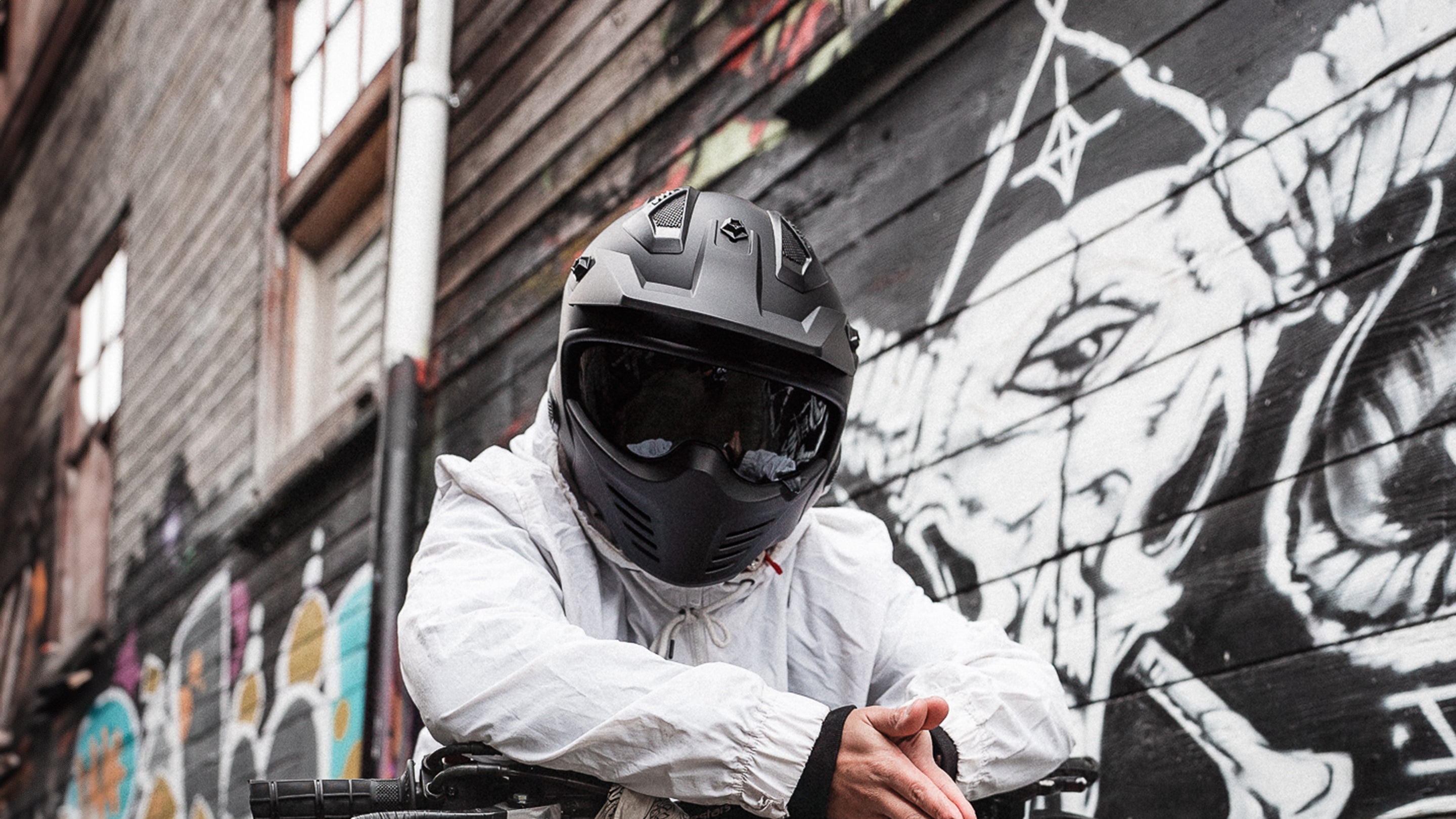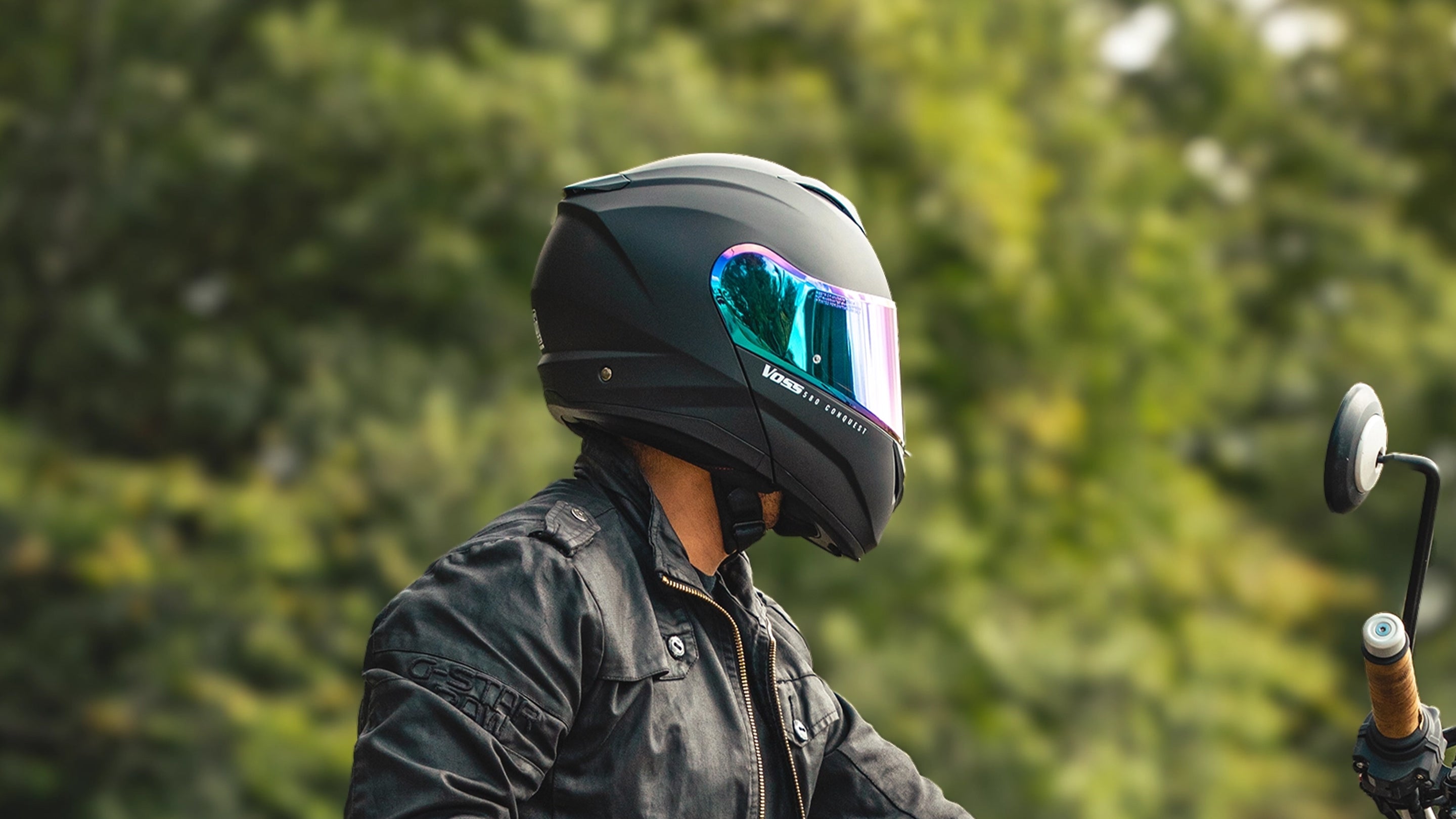How Motorcycle Helmets Are Manufactured - Part 1
Motorcycle helmets are more than just an accessory; they are a vital piece of safety equipment that can save lives. The process of manufacturing these helmets is intricate and involves various stages to ensure they meet the highest safety standards. Let's take a detailed look at how motorcycle helmets are made.
Materials Used in Helmet Manufacturing
The outer shell is the helmet's first line of defense. It's made from robust materials designed to withstand significant impacts.
-
Fiberglass: Fiberglass is popular for high-end helmets due to its strength and lightweight properties. It involves weaving fine glass threads into a cloth, which is then bonded with resin. The composite created is strong, lightweight, and flexible enough to distribute impact forces across the helmet's surface.
-
Polycarbonate: This plastic material is cost-effective and offers excellent impact resistance. Polycarbonate is used in an injection molding process, where pellets of the plastic are melted and injected into molds to form the shell. It’s tough and can absorb energy without cracking, making it ideal for affordable and safe helmets.
-
Carbon Fiber: The go-to material for premium helmets, carbon fiber is incredibly strong and lightweight, though it comes at a higher price. Carbon fiber helmets are made by layering sheets of carbon fibers that are bonded with resin. This material provides superior strength and lightweight, enhancing both safety and comfort for the rider.
The inner liner is crucial for absorbing impact and providing cushioning.
-
Expanded Polystyrene (EPS): EPS foam is essential for energy absorption during a crash. It is made by expanding small beads of polystyrene in molds, which fuse to form a lightweight and strong structure that can absorb and dissipate impact energy effectively.
-
Multi-Density Foam: Different densities of foam are used to optimize protection and comfort. Lower density foam can absorb minor impacts without sacrificing comfort, while higher density foam provides protection against more severe impacts.
Comfort padding ensures the helmet fits snugly and comfortably.
-
Fabric Types: Breathable and moisture-wicking fabrics are preferred to keep the rider cool and dry. These fabrics often include microfiber or synthetic blends designed to be soft on the skin, absorb sweat, and facilitate airflow.
-
Anti-microbial Treatments: These treatments help prevent odor and bacteria buildup. Helmets treated with anti-microbial coatings resist bacteria growth, keeping the interior clean and fresh for longer periods.
Design and Prototyping
Every helmet starts with a concept. Designers sketch ideas, considering both aesthetics and functionality. The goal is to create a helmet that not only looks good but also provides maximum protection and comfort.
Designers begin with sketches and drawings, incorporating both aesthetic appeal and functional features to ensure the helmet will be both attractive and effective in protecting the rider.
Advanced 3D modeling software is used to create digital prototypes, allowing for precise design adjustments. This step is crucial for visualizing the final product and making necessary changes before creating physical prototypes.
Physical prototypes are then made and subjected to rigorous testing to ensure they meet safety standards. This includes using the same materials and processes that will be used in the final product to ensure accuracy in testing.
Manufacturing Process
Creating the outer shell involves several critical steps:
-
Shell Molding Process: Two main processes are used to create the outer shell:
- Injection Molding: Molten material is injected into a mold. This process is quick and ideal for mass production, ensuring each helmet shell is uniform in strength and thickness.
- Compression Molding: Layers of material are placed in a mold and compressed under high pressure. This method is used for more durable shells, like those made from fiberglass or carbon fiber. It involves a more complex process but results in a stronger shell.
-
Curing and Hardening: The molded shells are then cured and hardened to ensure they can withstand impact. This involves controlled heating to harden the resins and ensure the material reaches its maximum strength.
Creating the inner liner involves the following steps:
-
EPS Foam Molding: EPS foam is molded into the shape of the helmet interior. This foam is crucial for impact absorption, and the molding process ensures it fits perfectly within the outer shell.
-
Multi-Density Foam Integration: Different densities of foam are integrated to provide optimal protection and comfort. This involves placing various foam layers in specific areas where different levels of impact protection are needed.
Adding comfort padding is an essential step to ensure the helmet fits well:
-
Padding Design: Comfort padding is designed to fit various head shapes and sizes. It includes ergonomic features to ensure the helmet feels comfortable during long rides.
-
Attachment to the Liner: The padding is securely attached to the inner liner to ensure it stays in place. This is done using adhesives or mechanical fasteners that hold the padding without compromising comfort.
The final assembly of the helmet involves integrating all the components:
-
Integrating Shell and Liner: The inner liner is inserted into the outer shell, forming the basic structure of the helmet. This integration must be seamless to ensure the helmet’s structural integrity.
-
Attaching Straps and Buckles: Chin straps and buckles are attached to ensure the helmet stays securely on the rider's head. The attachment points are reinforced to withstand significant force, ensuring the helmet remains in place during an impact.
Conclusion
Manufacturing a motorcycle helmet is a complex process that involves careful consideration of materials, design, and safety standards. Each step, from concept design to the final assembly, plays a crucial role in ensuring the helmet provides maximum protection and comfort. Remember, wearing a high-quality helmet can make all the difference in the event of an accident. So, always choose a helmet that meets safety standards and fits well.
FAQs
How long does it take to manufacture a helmet? The entire process of manufacturing a helmet, from design to final assembly, can take several weeks. This includes the time required for prototyping, testing, and ensuring all safety standards are met.
What is the difference between polycarbonate and fiberglass helmets? Polycarbonate helmets are typically more affordable and offer excellent impact resistance. They are made through an injection molding process. Fiberglass helmets, on the other hand, are lighter and stronger but come at a higher price. They are made by layering fiberglass cloth with resin.
How often should a motorcycle helmet be replaced? It is generally recommended to replace your motorcycle helmet every 3-5 years, depending on its condition and the manufacturer's guidelines. However, if you are involved in an accident or the helmet shows signs of significant wear and tear, it should be replaced immediately.
Are there any special maintenance tips for helmets? Yes, to maintain your helmet, always clean it with mild soap and water, avoid using harsh chemicals, and store it in a cool, dry place. Regularly check for any signs of damage and replace any worn-out parts.










